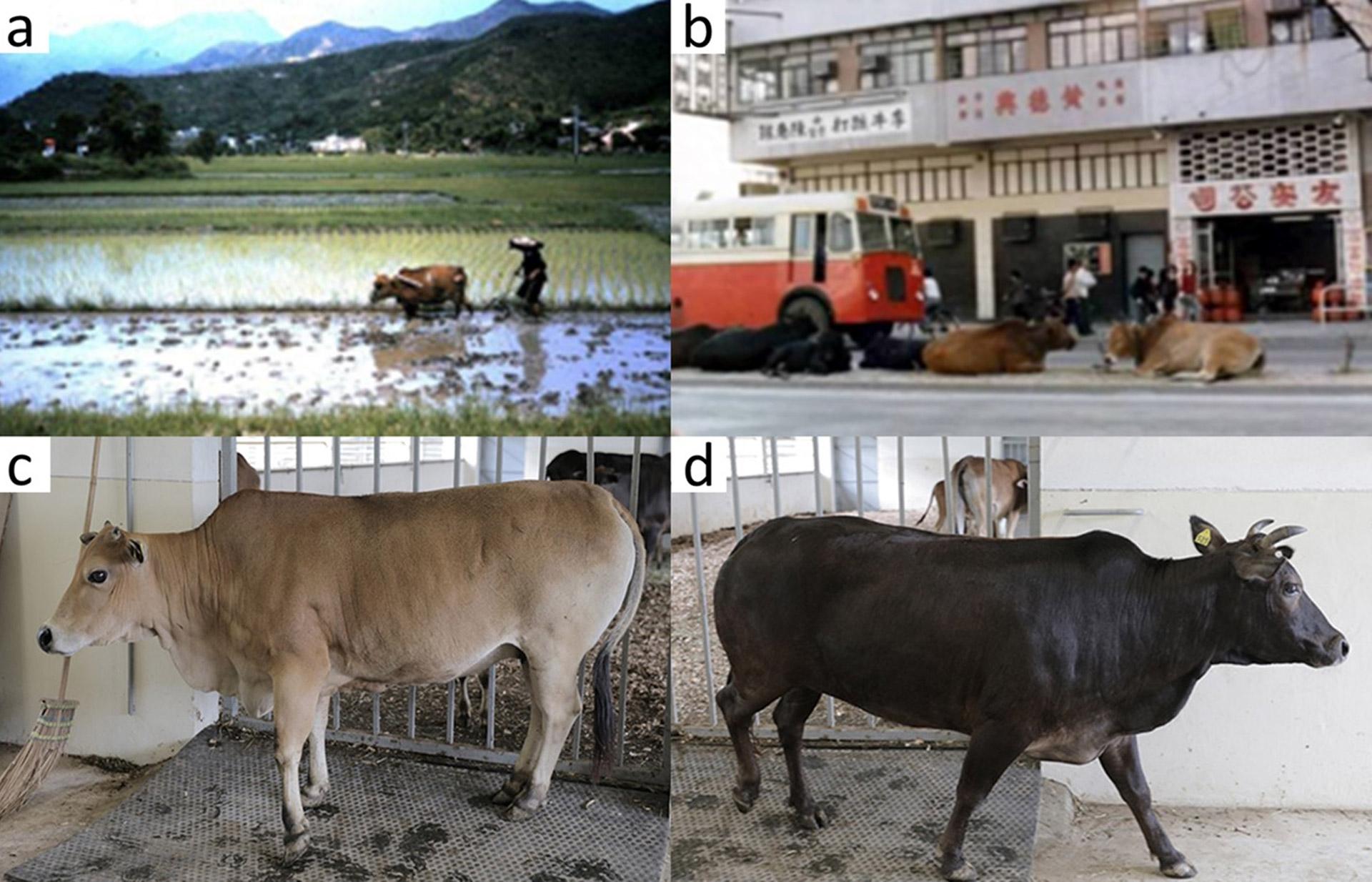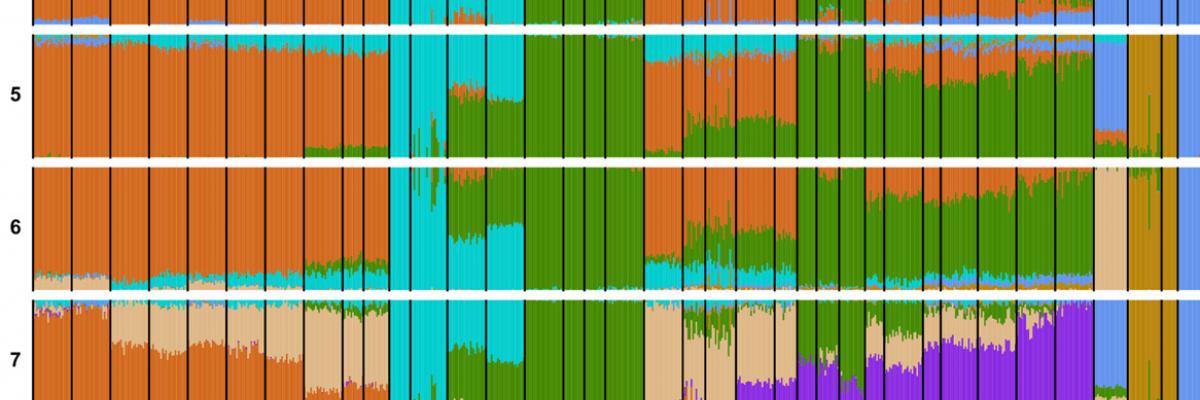Where do Hong Kong’s feral cattle come from?
Case study: Analysis of Hong Kong feral cattle reveals ancient origins.

Fig 1. Hong Kong feral cattle. A) Local cattle used as draught power in Yuen Long field in Hong Kong, ca.1960, and B) wandering in Yuen Long Dam Road Museum, ca.1950. C-D) Hong Kong feral cattle animals from the herd of Twa Ku Ling government farm (Photographs: Thomson MUI).
Although Hong Kong is one of the most densely populated regions in the world, it is mainly forest, and in that forest is a remnant cattle population of uncertain origin.
An international team of scientists including University of Adelaide researchers carried out an analysis of genotypes from 21 of these Hong Kong cattle, along with those from 703 individuals of 36 cattle populations of European, African taurine and Asian origin, and three other cattle species.
The starting dataset contained ~50k genotypes but because of ascertainment bias – the genotype chip was designed for taurine cattle and did not capture the other animals well – was eventually reduced to ~4k genotypes.

Fig 2. Admixture analysis of the first 10 K solutions for the 37 cattle populations. Hong Kong cattle are labelled HKF. Larger image. For population abbreviations see Table 1.
The Hong Kong cattle (HKF) separate out from taurine and indicine cattle very early, along with the other species (Fig 2, K = 3). At K = 4, HKF had ~30% wild Asian ancestry, with the remainder a combination of European taurine and Asian indicine ancestry. Ultimately, we assigned HKF ancestry as ~60% European taurine, ~20% indicine, ~10% gaur and ~10% banteng, the latter 2 being other species of cattle. The taurine component comes from European Holstein dairy cattle.
Our interpretation of this pattern of ancestry is that wild Hong Kong cattle were interbred with Holstein dairy cattle in Hong Kong, hence the high level of Holstein ancestry. The presence of indicine and such high levels of other species in HKF suggests that the non-taurine progenitors of HKF were from a local indicine population, along with introgression from the other species.
However, we cannot rule out that the non-taurine component actually reflects a different domestic cattle domestication event in Southern China, preceded or followed by introgression from other species. The genotype data is too sparse and too biased toward taurine cattle to address this question, so we have now fully sequenced 30 HKF genomes and have begun a deeper analysis to address this question.
